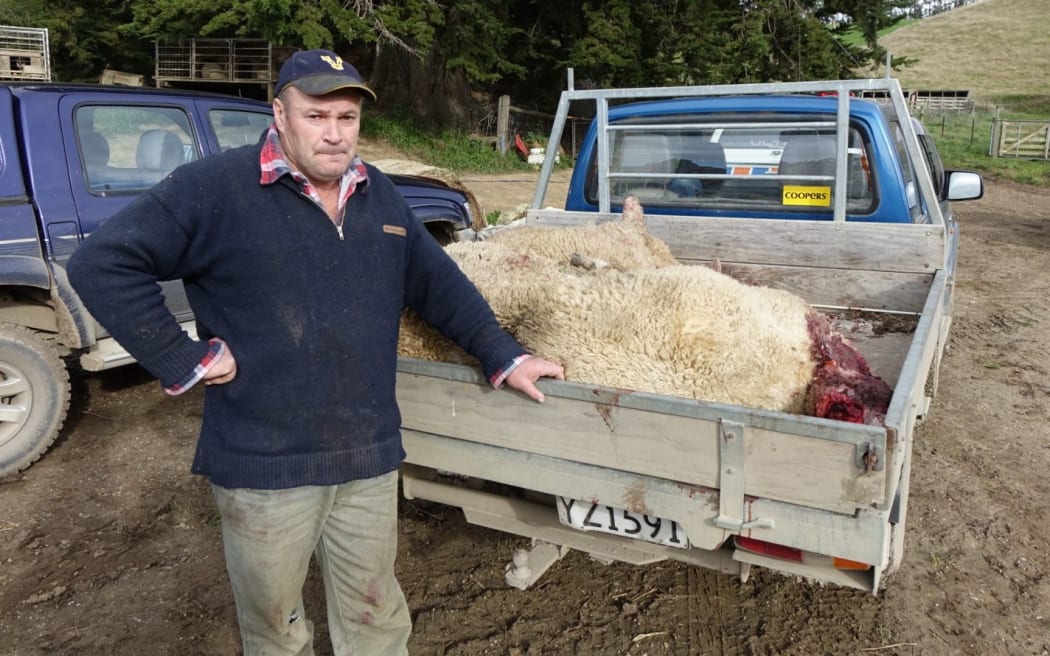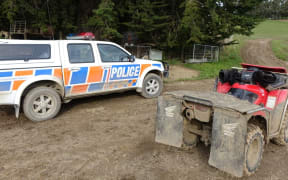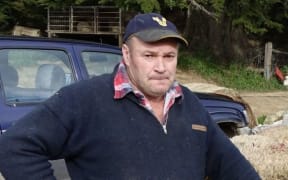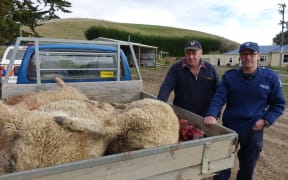Police say they have identified the dogs that killed more than 200 sheep in North Otago last year but do not have enough evidence to take action.

John Dodd lost 23 breeding rams and ewes in the attack. Photo: RNZ / Ian Telfer
Two hundred and fifteen sheep were killed, each with a single hole in their heads, on two different Ngapara farms over consecutive weekends in June last year.
Peter Stackhouse lost almost 200 sheep on his Ngapara property, about 30 km inland from Oamaru over two nights and, about a week later, John Dodd found more than 20 breeding rams and ewes dead on his property nearby.
North Otago police said initial indications were that the sheep had been shot.
However, after further investigations, they announced yesterday that dogs were responsible, no firearms or humans were involved, and they have now closed the case.
Area commander Jason Guthrie told Nine to Noon evidence from a forensic vet and the fact that no traces of firearms were ever found had convinced them it must have been dogs.
He said he was confident the police had got it right.
"Not one shell casing located at the scene, not one projectile either at the scene or in any of the animals, no metal fragments, the scene was searched with metal detecters, not one metal fragment found, no gun shot residue on any of the sheep."
However, four people involved in the case have told Radio New Zealand they do not agree that dogs were responsible.
One local man, who did not want to be named, said in his opinion, the sheep were held by dogs and then shot.
"You know, dogs just couldn't do what the police are saying they've done, it's physically impossible," he said.
"If a dog bit or bites something it crushes it downwards and inwards: these wounds went outwards, they were blown outwards, not inwards.
"And the sheep's skulls were damaged from the back of the skulls right down to the tips of the nose and that was just typical of what a high velocity projectile does."
He said the paddocks were too clean for it to have been dogs attacking on their own.
"If it's dogs worrying sheep, they leave a lot of wool and a lot of fluff all around the paddocks when they're trying to catch them and pull them down ... There was none of that in any of the paddocks, it was clean," he said.
"It was like somebody had been walking along with a very well-controlled dog saying 'here hold it' and they go and catch it, walk up and shoot it."
Insufficient evidence for charges - police
The man said it had been difficult for everyone in and around the community, but an outcome like this did not bring closure.
"It's been sort of swept aside, pushed aside if you want to put it that way, but we've never ever forgotten about it."
He said there had been lots of theories thrown around the community as to who might be responsible but proving it would be very difficult.
"To prove who's done it, you've virtually got to catch the person who's doing it ... because they're leaving virtually no evidence around, are they? Just a whole lot of dead animals."
Inspector Guthrie said police had identified the two dogs which were likely to have been involved but had legal advice they have insufficient evidence to lay any charges.
He said he was sympathetic to the farmer victims, but was confident the inquiry carried out by the main investigator was very thorough.
Mr Guthrie hoped the findings that dogs, not firearms, were involved would allay the fears of the Ngapara community.
Mr Stackhouse had earlier said the outcome of the investigation was disappointing.
He said the outcome raised questions about who the dogs belonged to and where they came from.
Mr Stackhouse said the fact the dogs were out there was a concern for the local farming community.





